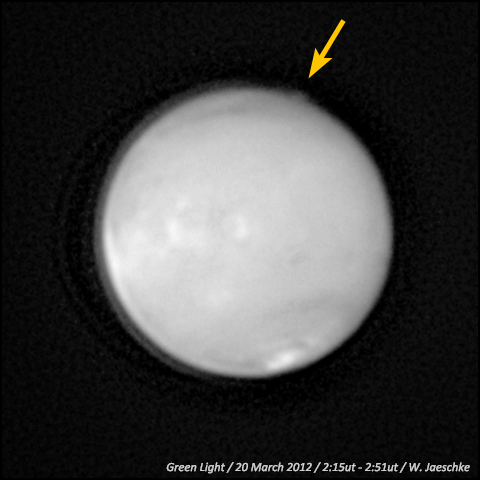February 23, 2015 weblog
Best of Last Week – Observing Higgs analogue in superconductors, mysterious Mars cloud and cancer risk found in soda

It was a good week for physics as a combined team of researchers from Germany and Israel were the first to observe a Higgs boson analogue in superconductors—the theory was first put forth a half century ago and the group was able to carry out their experiments in an ordinary lab. Another team of researchers confirmed the existence of super-terminal raindrops—a lot of rain drops falling during storms, it turns out, come down faster than terminal-velocity suggests they should.
In space news a "Cloud" over Mars has left scientists baffled—the plume appeared seemingly out of nowhere causing researchers to scramble for answers. Also a large team of international researchers announced a close call of 0.8 light years—a star appears to have passed through the Ort Cloud 70,000 years ago. In somewhat related news, a team of researchers identified a mineral that destroys organic compounds and noted the implications it has for the Mars Curiosity mission—when flash-heated jarosite breaks down organic matter, a problem because it is the same process used by the rover to find the mineral.
In other news, Dutch Windwheel has been drawing energy innovations—the showcase for clean energy technology has been offering demonstrations of among other things, wind turbines with no moving parts. Also researchers at the University of Portsmouth have found the strongest natural material known to date—limpet teeth. The small aquatic creature has teeth so strong other researchers are looking into whether the design can be copied for use in cars or planes. Also a team of researchers at Yale University has revealed the anti-inflammatory mechanism behind dieting and fasting—apparently it is all due to the compound β-hydroxybutyrate inhibiting the protein NLRP3. And new satellite images reveal ocean acidification from space—researchers describe new techniques that are being developed that will allow scientists in the future to track increased acid in the ocean due to the rise in carbon dioxide in the atmosphere.
And finally, if you are one of the millions of people who consume soft drinks, a new study suggests that a popular soda ingredient poses a cancer risk to consumers. Now it appears that in addition to making people fat, many such beverages also contain a chemical that comes about during the making of caramel coloring. Perhaps that will be enough reason for people to stop.
© 2015 Phys.org



















